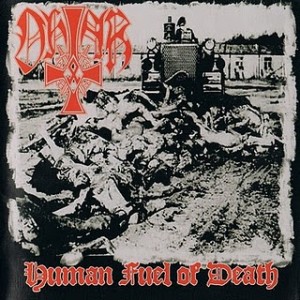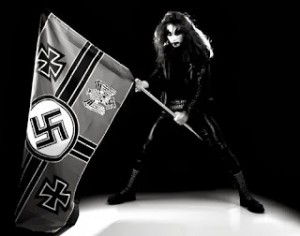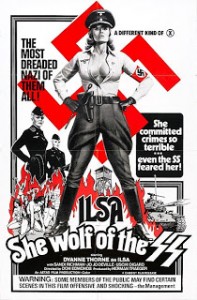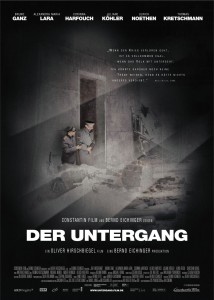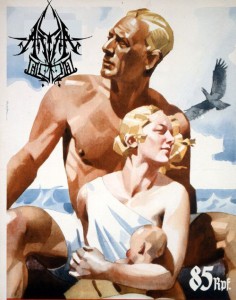However successful George Miller’s 2015 Mad Max movie was, for a variety of reasons it is unlikely to have the impact of the second (and by extension, the far superior first) one did; the release of 1981’s Mad Max 2 (known internationally as The Road Warrior) coincided with the boom in home video (specifically home video rental; those were the days when to actually buy a movie on VHS cost outlandishly vast sums) and the fact that it was set in a barren landscape with details (cars, clothes, technology) that were recognisably contemporary, but generally beaten-up, rather than gleamingly futuristic meant that its look and feel was easy to imitate on an extremely low budget. The storyline, too, was simple and dynamic in the style of a spaghetti western; requiring only a few key locations, a small cast and some action, it was apparently eminently imitable. Except of course, that George Miller is a masterful director and the pre-Hollywood Mel Gibson was an immensely charismatic and capable actor.
There was also the atmosphere of the early 80s; people may now, on the whole, be more scared than they were then, but the threats of the 21st century are rarely as monolithic and inescapable as the fear of nuclear war once was. The cold war, pre-Gorbachev, created a paranoia that pervaded not only obvious movies like Wargames (US) and When the Wind Blows (UK), but also silly flag-waving nonsense like Rocky IV. Not surprisingly, this is a feature of life in the 80s rarely acknowledged by the nostalgia industry.
Aside from Mad Max 2, the other cinematic progenitor of the 80s post-apocalypse straight-to-video movie was John Carpenter’s 1981 masterpiece(ish) Escape From New York. In fact, so influential are these movies that many of those that follow could (and will) justifiably be referred to as ‘Escape from Mad Max 2’ movies. Most of the classic derivative B movies can be easily identified by the presence of a post-Mad Max/Snake Plissken hero – lone, brooding, grizzled, leather clad, often with unacceptable hair.
Due presumably to it’s powerful final scene, the 1968 classic Planet of the Apes is evoked every now and then, albeit on a less epic scale; even less obvious, but arguably still there, is the distant influence of HG Wells’ The Time Machine, with its vision of a small ‘civilised’ ruling elite (Eloi) living in comfort and bestial devolved humanoids (Morlocks) roaming the wilds. A debased version of this idea; a small group of nice, civilised people terrorised by a group of not-nice, non-local people, helped by a nice, non-local person or people is so widespread in cinema (westerns, samurai movies, Night of the Living Dead etc etc) that it’s hard to say where exactly it originated (actually, probably somewhere quite obvious/well known, but I will look that up after it’s too late for this article).
Since the 1920s, most Hollywood movies have historically tried to sell themselves with a snappy tagline; as you will see, these movies have some of the best ever coined. So here is a selection of worthwhile post-apocalyptic movies that gives an idea of how varied even such a narrow subgenre can be…
Countdown to Apocalypse…
Technically pre-dating the 80s straight-to-video post-apocalyptic cycle (and influencing it?) but definitely worth a mention is
Damnation Alley (1977)
Tagline: You Have Seen Great Adventures – You Are About To Live One
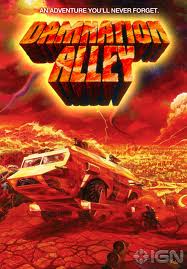 Basically a bunch of TV and B-movie actors driving around the desert in ridiculous Robot-Wars-looking modified vehicles. Many of the factors that would become clichés are firmly in place here; a shattered, post-apocalyptic world (cheap desert locations), a ramshackle group of survivors (though less fashionably ramshackle than in Mad Max 2 and its imitators), a pretty basic ‘quest’ style theme (in this case a search for fellow survivors).
Basically a bunch of TV and B-movie actors driving around the desert in ridiculous Robot-Wars-looking modified vehicles. Many of the factors that would become clichés are firmly in place here; a shattered, post-apocalyptic world (cheap desert locations), a ramshackle group of survivors (though less fashionably ramshackle than in Mad Max 2 and its imitators), a pretty basic ‘quest’ style theme (in this case a search for fellow survivors).
In terms of general filmmaking competence and originality this, though not great, is far above the standard of the general 80s movie of this type.
Another early entry that sets the tone for what was to follow is…
Ravagers (1979)
tagline: 1991: Civilisation is Dead
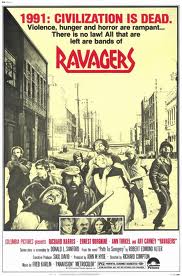 It really IS dead; in this yawn-apocalypse, Richard Harris tries to find a way to safety through a decaying post-civilisation landscape populated by warring gangs. It is far less exciting than one would think possible.
It really IS dead; in this yawn-apocalypse, Richard Harris tries to find a way to safety through a decaying post-civilisation landscape populated by warring gangs. It is far less exciting than one would think possible.
Post-Apocalyptic Raids
Not surprisingly, the true Escape from Mad Max 2 subgenre was defined by the work of Italian B-movie/exploitation directors. One of the true genre-setting movies, and pretty ubiquitous in video shops back in the 80s is Enzo G Castellari (director of Jaws ripoffs, horror movies and The Inglorious Bastards (1978))’s opus:
1990; The Bronx Warriors (1982)
tagline; The lucky ones were the first to die!
The disclaimer here is that there is no apocalypse as such; but the movie is 100% in the post-Escape From New York genre, with the Bronx declared a warzone and sealed off from the rest of the world, left to the feuding gangs that inhabit its decaying tenements and warehouses.
In fact, the movie is kind of an amalgam of several sources, most notably Walter Hill’s all-time great The Warriors (1979) and it owes as much to Romeo & Juliet and to spaghetti westerns as it does to the usual subgenre films. It is fun, more or less, but it has serious pacing problems (not to mention dubbing issues) that put it firmly in the z-list. The characters too are confusing – storyline-wise Mark Gregory’s ‘Trash’ should logically be the hero or the villain but isn’t really either. On the plus side, though, there is a character called ‘Toblerone’! This movie was part of a seam of post-apocalyptic movies with ‘Bronx’ in the title, possibly influenced by the depiction of the Bronx as violent no-man’s-land in Paul Newman vehicle Fort Apache The Bronx (1981)? Bronx Warriors itself is followed by the very similar but not-at-all-better Bronx Warriors 2 (Escape from the Bronx). Everything you need to know about that one is on this better-than-the-movie poster:
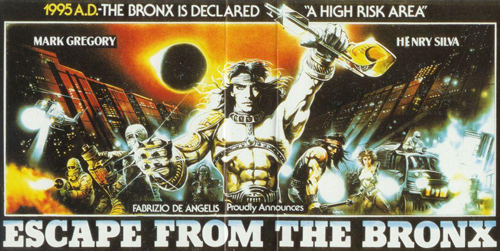
Another, but better Escape from Mad Max 2 movie is Fred Olen Ray associate Steve Barkett’s
The Aftermath (1982)
tagline; Hell in the Aftermath; who will survive?
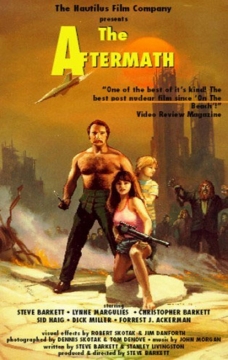 Mad Max‘s bizarre mutant biker-gang leader was (strangely yet memorably) called Toecutter. The Aftermath has a gang of mutant weirdo bikers led by B-movie god Sid Haig’s ‘Cutter’. Despite the utter lack of originality, the story (slightly influenced by Planet of the Apes: astronauts return to Earth to find it a post-apocalyptic wasteland inhabited by gangs of violent criminals et cetera) and direction actually make this a very watchable B-movie.
Mad Max‘s bizarre mutant biker-gang leader was (strangely yet memorably) called Toecutter. The Aftermath has a gang of mutant weirdo bikers led by B-movie god Sid Haig’s ‘Cutter’. Despite the utter lack of originality, the story (slightly influenced by Planet of the Apes: astronauts return to Earth to find it a post-apocalyptic wasteland inhabited by gangs of violent criminals et cetera) and direction actually make this a very watchable B-movie.
Sadly, the same cannot be said for:
She (1982)
Tagline; Sandahl Bergman tempted Conan and now she is ready to take on the World
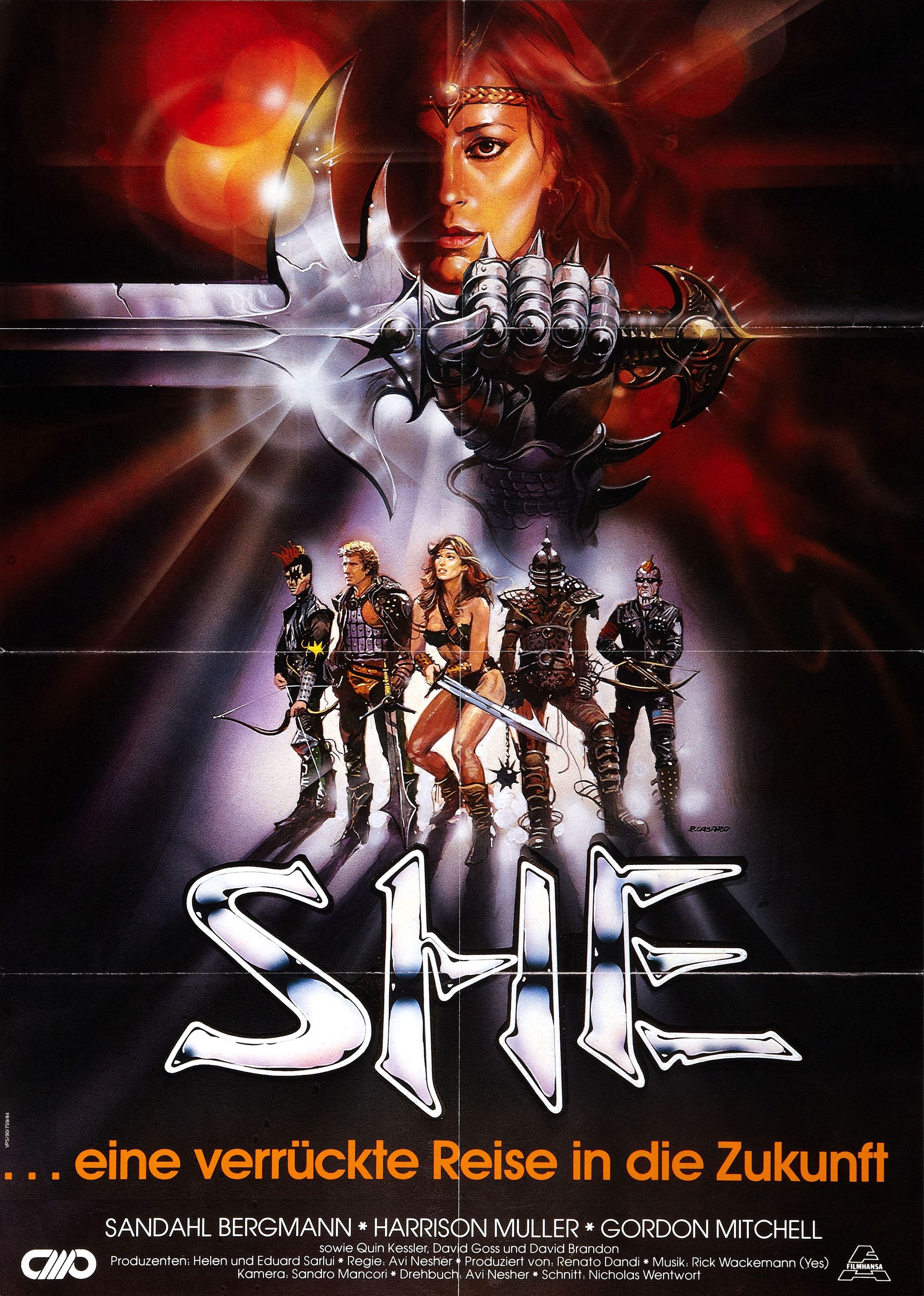
Even the truly great Sandahl Bergman (of Conan the Barbarian etc) can’t save this plodding post-apocalyptic updating of H Rider Haggard’s classic adventure novel She. There are lots of excellent and bizarre elements; werewolves, gladiators, mad scientists and so on – but (a key genre fault, this) the pacing is bad and the atmosphere flatter than a dust-swept wasteland. A sad waste of talent, especially since it was directed by non-schlock Israeli director Avi Nesher.
Similarly unambitious but more fun is giallo maestro Joe (Papaya: Love Goddess of the Cannibals) D’Amato’s…
Endgame (1983)
tagline; For An “Endgame” Champion In The Year 2025, There’s Only One Way To Live. Dangerously
‘Escape from Mad Max 2’ again; this film shares many parallels with the later The Blood of Heroes (see below) and looks forward to The Running Man, but is much more fun than either. Telepathic mutants, violent game shows, warriors, what’s not to like?
Similar but SO much better; perhaps the ‘Escape from Mad Max 2’ movie of all time also arrived in ’83, in the shape of Italian exploitation master Sergio (La Montagna Del Dio Cannibale) Martino’s opus…
2019: After The Fall of New York (1983)
tagline; Mankind will prevail if it can survive the year 2019…
After a nuclear war, naturally, (this film, like John Carpenter’s, actually names the – now alarmingly close – year, rather than giving the usual vague-but-infinitely-more-sensible date of ‘the near future’) society has broken down, technology has failed and gangs of radiation-infected mutants roam the ravaged wasteland blah-de-blah.
In this case, what’s left of society is being led by the evil and repressive “Euraks”, while a rebel Federation fights for the survival of the old ways of life (presumably those same ways of life which led to the apocalypse, but that’s people for you).
In a blatant ripoff of Escape from New York, the Federation hires a mercenary (though not a nothing-to-lose criminal like Snake Plissken) called, somewhat loftily, ‘Parsifal’, who, naturally owes allegiance only to himself and his own survival and *snoooooore* but nevertheless accepts the mission to travel into the heart of New York(!) to retrieve the only fertile female left on earth.
The key to this film’s enjoyability is its utter trashiness, and to be fair, the survival of the human race does seem like more of a ‘prize’ than the life of the President or fuel. Fun, nasty and definitely unboring, like B movies should be.
Speaking of ‘Escape from Mad Max 2’ …
Stryker (1983)
tagline; After the holocaust, nothing matters but survival also, perhaps better; The Odds are a million-to-one. And Stryker is the one.
Uninspired taglines for an uninspired movie; Filipino exploitation master Cirio H. Santiago (TNT Jackson, Nam Angels) directs this opus in which, after the inevitable apocalypse, the world is running out of water (of course), and a group of Amazons guard the last known freshwater spring but are attacked by a gang of blah blah blah, until moody, monosyllabic tough guy “Stryker” turns up to help them out. You know the rest.
more of the same in….
2020 – Freedom Fighters (1984)
tagline; When earth becomes an arena… murder becomes a way of life.
Joe D’Amato again, but on much weaker form, this super cheap plodathon tells the story of a band of grizzled warriors fighting against fascism in post-holocaust Texas.
Business as usual in Bobby (The One-Armed Executioner) Suarez’
Warriors of the Apocalypse (1985)
tagline: They turned paradise into hell!
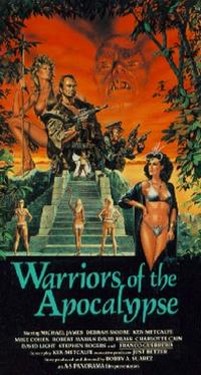 Although firmly in the Escape from Mad Max 2 mould, there is a welcome flavour of heroic fantasy in this movie. After civilization has inevitably been wiped out by nuclear war, a ridiculous leather-clad adventurer leads a group of wanderers on a search for the fabled Mountain of Life, on the way encountering mutants, pygmies, ladies in fur bikinis etc. FUN.
Although firmly in the Escape from Mad Max 2 mould, there is a welcome flavour of heroic fantasy in this movie. After civilization has inevitably been wiped out by nuclear war, a ridiculous leather-clad adventurer leads a group of wanderers on a search for the fabled Mountain of Life, on the way encountering mutants, pygmies, ladies in fur bikinis etc. FUN.
A very welcome if sadly very bad addition to the genre is…
Robot Holocaust (1986)
tagline; It’s machine versus man in the ultimate battle for the future!
Finally, someone (in fact Tim Kincaid, director of Bad Girls Dormitory and gay porn) realised that there might be robots after the apocalypse! In this timeless masterpiece (as much heroic fantasy as anything else) a ‘drifter’ called ‘Neo’ and his rusty robot sidekick battle evil authorities who are using slave labour to run their power station, with extremely low budget results.
More typical (but less fun, and shockingly an even weaker premise) is…
Steel Dawn (1987)
tagline; there are several, none great. Best is probably In this frightening time, one man makes a difference
In a post-apocalyptic wasteland, an evil gang are menacing a peaceful group of survivors because they want to steal their water. *YAAAWN*, and then a ludicrously bearded warrior in the shape of the late, great Patrick Swayze(!) arrives to sort everything out. Yep, it’s ‘Escape from Mad Max 2’ again, only more good-natured and much less fun.
But what happens when you cross ‘Escape from Mad Max 2’ with the superior 70s sci-fi movie Rollerball, I hear you ask..?
The Blood of Heroes (ridiculously aka The Salute of the Jugger) (1989)
tagline; The Time Will Come When Winning Is Everything
The second half of the 80s produces especially threadbare variations on the post-apocalyptic straight-to-video movie and this is one of the worst; in this future, the ragged survivors of nuclear war aren’t looking for fuel, Presidents, ladies or even water; they are playing a nasty yet somehow extraordinarily dull version of football. ‘The Time Will Come When Winning Is Everything’ – hopefully not for a while yet though.
Fred Olen Ray got a brief mention earlier, and it would be strange if one of the ultimate Z-movie directors of the era hadn’t dabbled in a (presumably lucrative) straight-to-video genre: of course he did!
Warlords (1988)
tagline: He came out of nowhere. A stranger, a soldier… and maybe a saviour
Seriously cheap (though less so than Olen Ray’s Lovecraftian yawnathon, Phantom Empire) this endlessly boring Escape from Mad Max 2 movie has a cast of maybe 10 people, several of whom play handily-masked mutants that hero David Carradine despatches every 10 minutes or so. The ‘plot’; Warlord (Sid ‘the Cutter’ Haig) kidnaps a girl and takes her into the mutant-ridden wastelands. David Carradine rescues her. Even the fairly formidable quantities of gratuitous nudity that 80s B-movie directors revelled in fail to make this watchable to post-adolescent people.
Almost too late, but just about worth a mention is
World Gone Wild (1988)
tagline; 50 years after the end of the world the only ones left are nuked-out, zoned-out burnouts. The wildest adventure of all is about to begin.
Actually it really isn’t. A small role for Adam Ant as a bad guy is perhaps the most memorable thing about this ‘ragtag bunch of survivors protecting dwindling water supplies’ movie, but it is more-or-less watchable and fun.
AFTERMATH…
‘More-or-less watchable and fun’ may be a modest achievement, but it is but an unattainable dream for the most recent additions to the genre. There are (leaving aside ‘big’ movies like The Road and The Book of Eli which, whatever their faults, are not B-movies in the usually accepted sense) comparatively few these days, but those that there are (that I have seen) are on the whole not even as enjoyable as the lamer entries here, and in some cases (Doomsday (2008)) fall into all of the old ‘Escape From Mad Max 2‘ cliches, without even the excuse of cashing in on a recent, fashion-changing blockbuster. And then there is the new Mad Max. But if Charlize Theron, Tom Hardy and actually being released in cinemas just seems too commercial, there is enough of the 80s apocalypse out there (if not available on DVD, let alone Bluray) to keep even the most hardened leather-clad mercenary busy for some time...


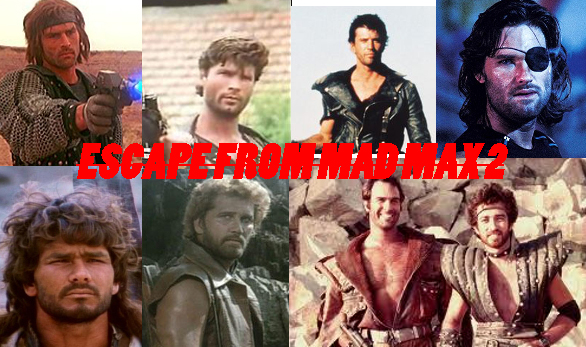
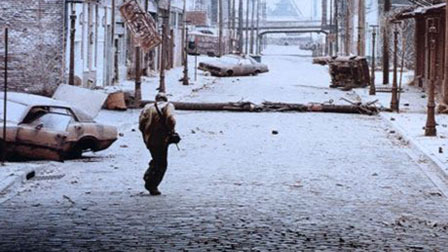
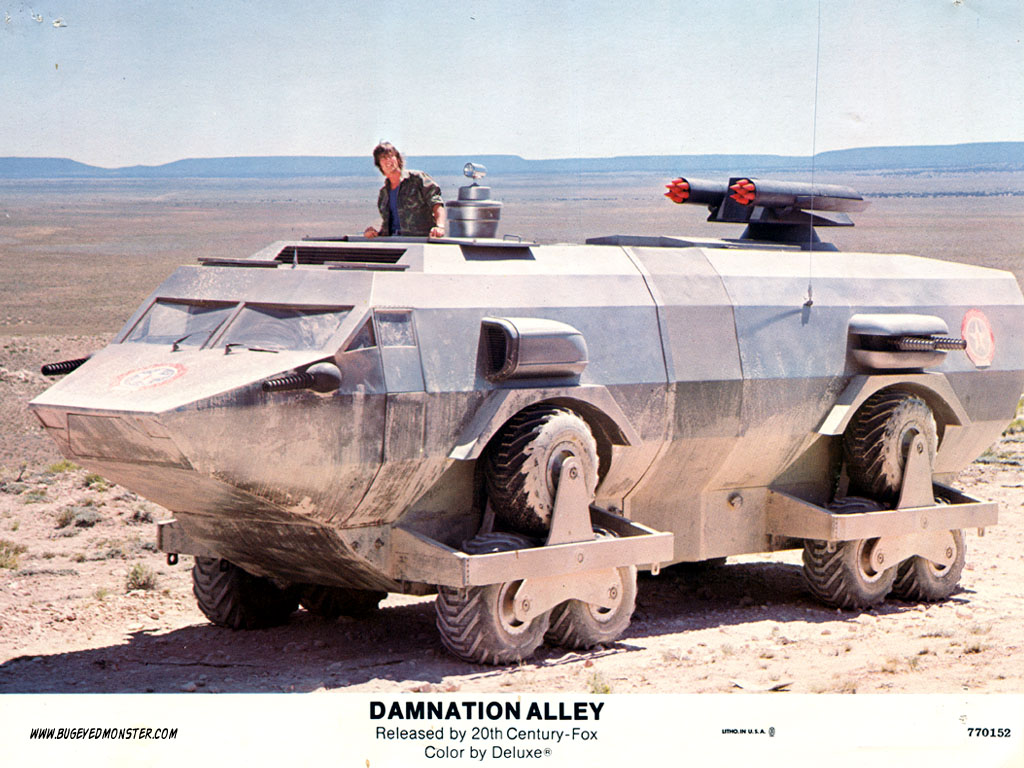
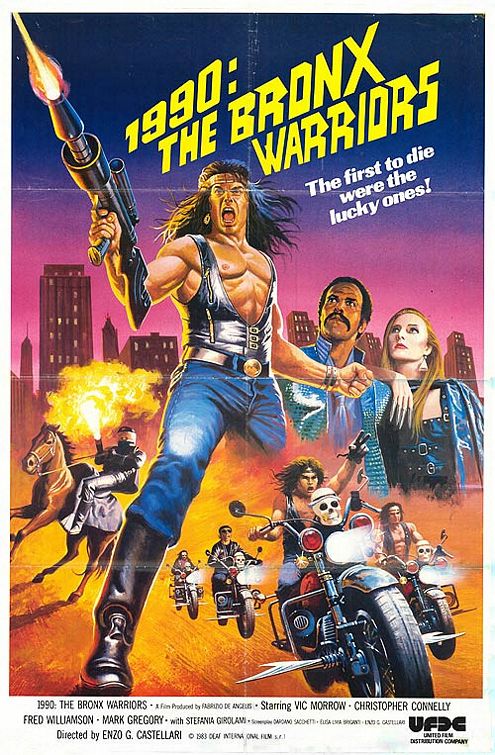
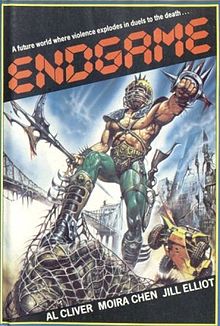
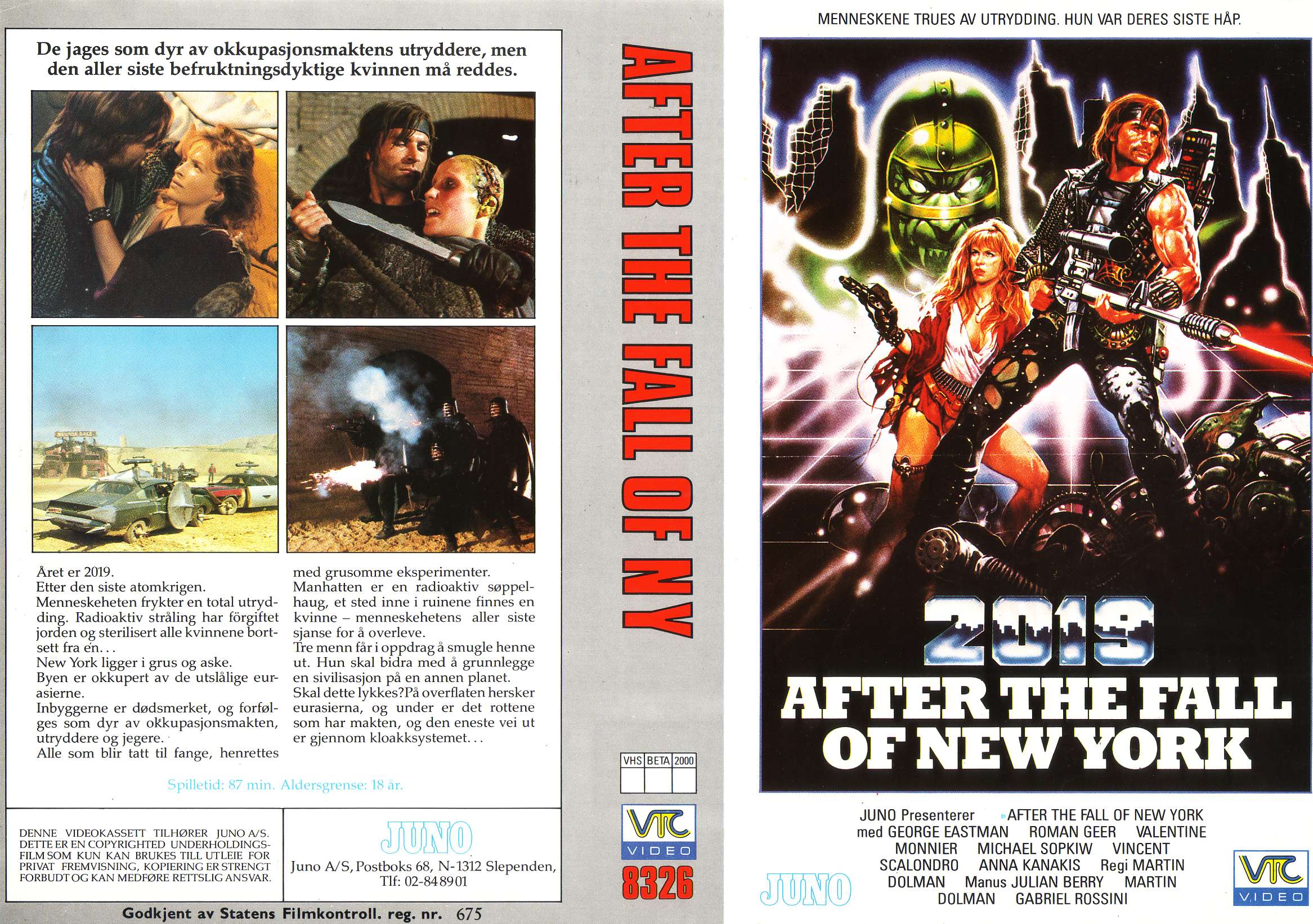
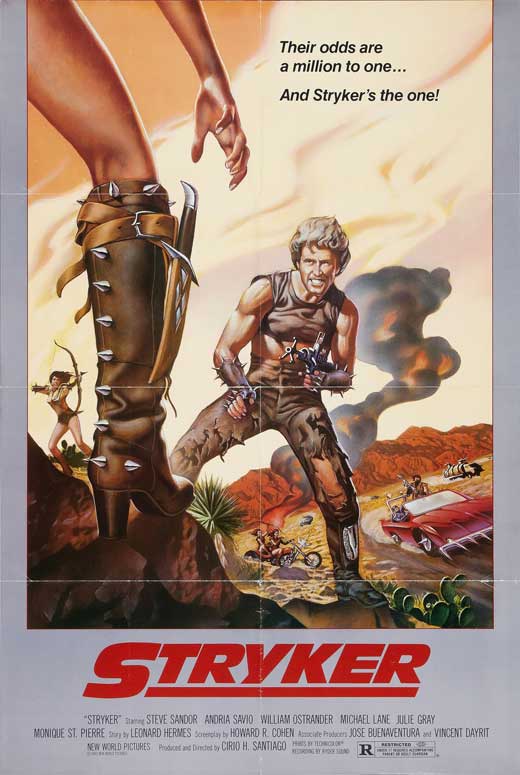
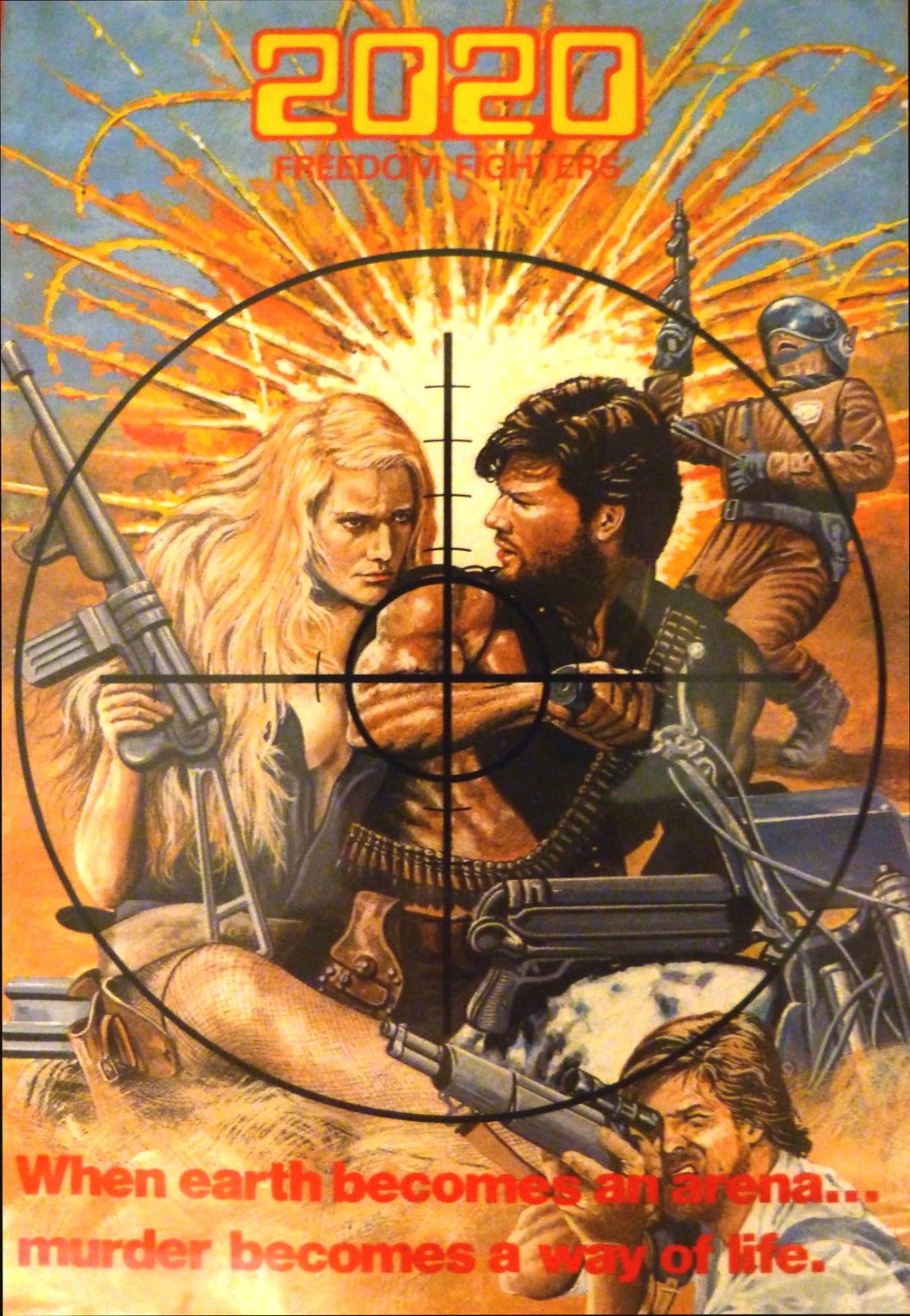


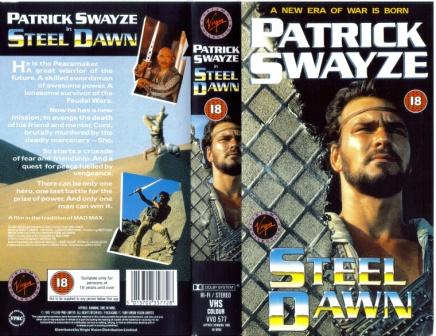
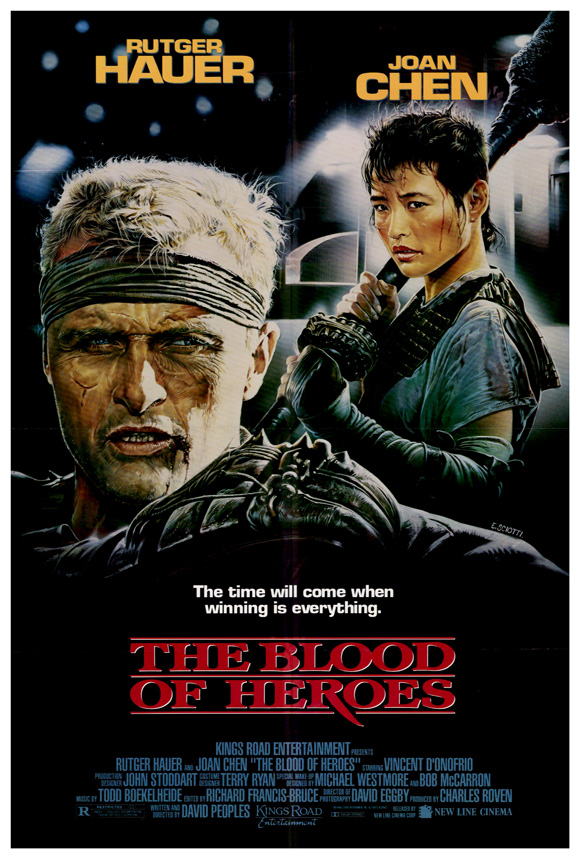
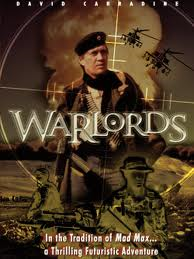
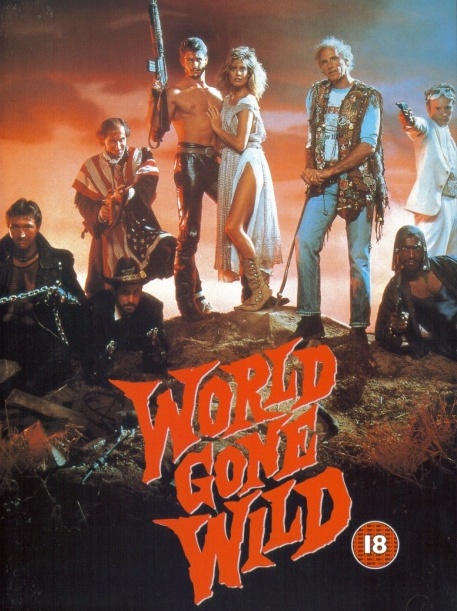
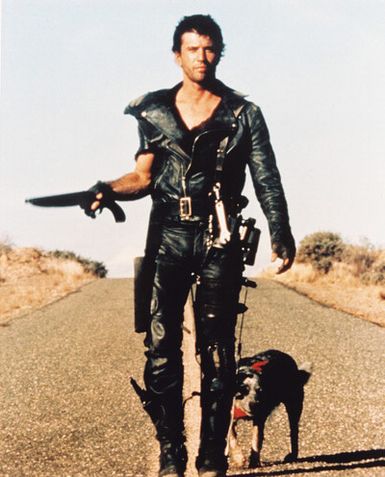


 It’s not National, to my knowledge it’s rarely socialist, but it mostly is black metal; National Socialist Black Metal (hereafter, NSBM) annoys people by being ‘too evil’, or at least evil in the wrong way. As the snuff movie is to the horror movie, it seems, NSBM is to BM. There are a couple of flaws in this analogy; firstly, it suggests that black metal in general is, like horror movies, some kind of fantasy (which it certainly often is, but isn’t necessarily) and secondly, that NSBM isn’t some kind of fantasy (see previous parentheses). The Nazis of World War 2 represent the ‘ultimate evil’ to people of the post-war generations because whereas even the worst serial killers of the 20th century ‘worked’ on an individual, localised scale, the Nazis made murder into an ideology and ultimately an industry. That is, they functioned in ways that are relevant and relate-able to the daily lives and experiences of most people; but in bringing that mundane quality to extermination; ‘death factories’ they ultimately created something more frightening than a lone maniac. So is Nazi black metal the embodiment of that famously banal evil and therefore the ultimate in musical terrorism? Hmm, possibly not but let’s see…
It’s not National, to my knowledge it’s rarely socialist, but it mostly is black metal; National Socialist Black Metal (hereafter, NSBM) annoys people by being ‘too evil’, or at least evil in the wrong way. As the snuff movie is to the horror movie, it seems, NSBM is to BM. There are a couple of flaws in this analogy; firstly, it suggests that black metal in general is, like horror movies, some kind of fantasy (which it certainly often is, but isn’t necessarily) and secondly, that NSBM isn’t some kind of fantasy (see previous parentheses). The Nazis of World War 2 represent the ‘ultimate evil’ to people of the post-war generations because whereas even the worst serial killers of the 20th century ‘worked’ on an individual, localised scale, the Nazis made murder into an ideology and ultimately an industry. That is, they functioned in ways that are relevant and relate-able to the daily lives and experiences of most people; but in bringing that mundane quality to extermination; ‘death factories’ they ultimately created something more frightening than a lone maniac. So is Nazi black metal the embodiment of that famously banal evil and therefore the ultimate in musical terrorism? Hmm, possibly not but let’s see…

